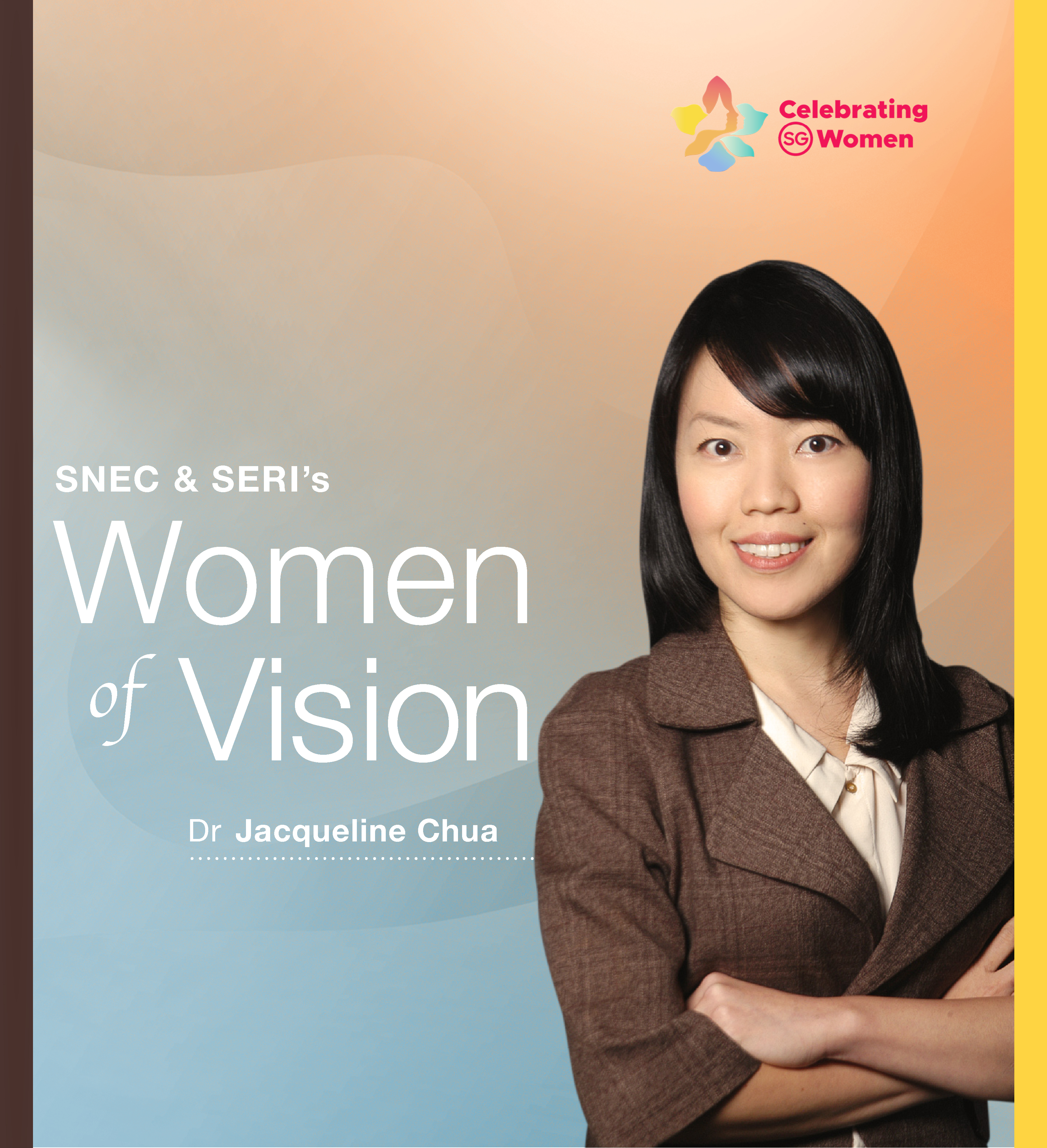Women of VisionCelebrating SG Women
In the Year of Celebrating SG Women, we present stories which showcase and celebrate women’s multi-faceted contributions and progress at SNEC and SERI.
Join us to honour and acknowledge our team of amazing women who have made impact in the field of Ophthalmology, inspiring those around them with their brand of ethos in life.

Dr Jacqueline Chua
Optometrist, Primary Eyecare Clinic, SNEC
Clinician Scientist, Ocular Imaging Research Group, SERI
Why did you choose to become an optometrist/researcher?
I have been working in eye research for eight years, but decided to be an optometrist/researcher over the last four years. This is primarily because of my mentor, Prof Leopold Schmetterer — his constant encouragement made me believe that I could do it. Also, I am invigorated by my patients. What keeps me going is coming up with solutions that prevent patients from suffering unnecessarily due to late detection. That is ultimately more fulfilling than anything else. Hence, I always appreciate learning new things from cool people and enjoy tackling questions.
How has family support helped you get to where you are in SNEC/SERI?
Research is grant-based; hence, funding can get rather competitive. I am eternally grateful to my husband for advising me to pursue something edgy yet interesting to me. On more practical matters, he is always on hand to run errands and prepare meals whenever I have big grant deadlines coming up!
What are your biggest achievements to date?
Being awarded my very own Transition Award in 2019! This achievement has allowed me to pursue what I am passionate about: developing novel imaging biomarkers to improve glaucoma detection, which right now is clinically challenging.
In five to 10 years, what do you hope to accomplish in terms of your work?
I hope to win the Clinician Scientist Award. This will allow me to validate whether the novel biomarker I have developed from my research can detect glaucoma earlier and more precisely in a real-world setting. In glaucoma, retinal ganglion cells die prematurely. We have a device, called the optical coherence tomography, which can measure the loss in the retinal ganglion cells’ axons in patients, and compare it to someone normal. However, the device doesn’t take into account ocular features, such as the length of the eye. Taking into consideration individual differences can improve glaucoma detection. I currently have two members actively helping me to do this. I am thankful for their multi-tasking ability in recruiting patients, performing quality assessments on the scans, applying the algorithm, etc. I hope to expand this group so that we can translate this novel tool into a clinical setting.
Click
here to check out the
Women of Vision series.
